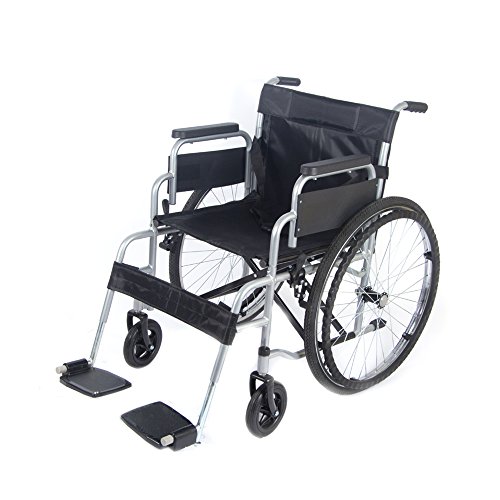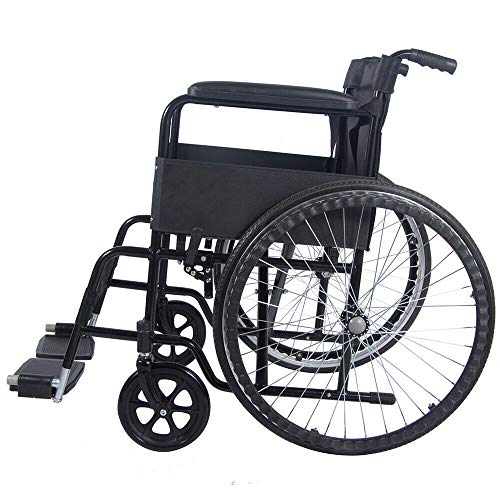![]()
Transit Wheelchair Vs Self Propelled
A transit wheelchair (also known as an attendant chair) is designed to be driven by an attendant such as a carer. They have a handle at the back and can be folded to fit in the car boot or used to be stored easily.
 They are also perfect for use on public transport, such as buses and trains.
They are also perfect for use on public transport, such as buses and trains.
Size
self propelled wheelchair with attendant brakes-propelled wheelchairs allow clients to move around on their own without relying on another person pushing them. They can visit the shops, meet with friends or go for walks whenever they want without waiting around for someone else to be in the area. self propelled wheelchair with attendant brakes-propelled chairs come with a range of push-rims, which let the user move more efficiently and easily. They also come with larger rear wheels which are designed to assist them to travel over obstacles more easily. Whether the wheels are pneumatic (air) or solid will make a difference in the amount of weight that can be pushed across rough surfaces, and it is important that the weight is within a safe limit.
Transit wheelchairs or attendant-propelled chair have smaller frames and wheels which make them ideal for shorter distances when they are pushed by an attendant. These types of wheelchairs are usually used by health services and hospitals to transport their clients from one location to the next like when they go for an excursion into town or to visit their friends. They are also common to see in airports, where personnel make use of them to help passengers from their arrival gate to the aircraft.
When choosing a transit wheelchair it is essential that the seat’s width and depth is appropriate to the individual user. It will let the user sit in the chair with the best posture possible, improving mobility and well-being. This can also lower the chance of developing pressure ulcers and other medical issues.
Consider any extra features that the wheelchair might have, such as removable armrests or a reclined backrest. These can make it more convenient to ride and easier to fold for storage or transportation. Certain wheelchairs have a wheels that release quickly and can be easily removed to make the wheelchair lighter and easier to move or store. This could also be an added safety feature, since it will prevent the wheel from getting stuck during transportation.
Weight
The weight of a wheelchair makes an enormous difference in its maneuverability and ability to move over terrains that vary. This is especially true in the case of transit chairs that are designed to be pushed over short distances by a driver. They are easier to push because they have smaller frames and wheels with lighter weights.
These chairs are also great for trips to the local area like shopping or visiting friends. When selecting a transit chair, it is essential to think about the requirements and expectations of the person using it. For example the seat dimensions and width should be suited to the size of the passenger and padded wheelchair cushions may be utilized to improve the comfort of the user and avoid pressure sores.
Self-propelled wheelchairs on the other hand, have large rear wheels that permit users to propel themselves while sitting. The chairs have handles for pushing on their backs, which allow them to be pushed by an attendant or family member but they are primarily designed to let the user move themselves around with ease.
Wheelchairs can be made to meet a variety of needs, so it’s essential to think about what is a self propelled wheelchair you are aiming to accomplish prior to making a decision on whether a transit or self propelled chair is right for you. If you are looking to use a wheelchair in the outdoors it is recommended to pick one with larger rear wheels that will allow you to effortlessly navigate down steep slopes and climbs.
Wheelchairs with larger rear tires are also more stable, and reduce the risk of tipping on uneven surfaces. If you’re not sure which wheelchair is right for you, or if you’re considering an upgrade you should consult an expert. They can provide advice on which wheelchairs are the most suitable for your needs and assist you choose the right model.
Contact us today to speak to a wheelchair specialist if you would like to know more. Our team of knowledgeable and helpful experts will help you find the ideal wheelchair that meets your needs.
 Stability
Stability
Many people think of a transit wheelchair or transport chair when they picture a wheelchair. It is equipped with four wheels and two handles at the back to allow an attendant to push the user around. They are great for trips to the store or for trips on vacation, since they can be driven by an attendant. They are light and compact, making them easy to carry and store.
One of the main considerations when choosing the best self propelled wheelchair wheelchair is stability. The position of the back wheel is a key factor in determining the stability of the chair. A wheelchair with the wheel well forward of the client is usually unstable and could easily tip. This is particularly a problem when outdoors where there may be obstacles in the way. Wheelchairs with the rear wheel further back are usually more stable, but it can hinder the ability of the user to perform”wheelies” or to walk over small steps.
Another aspect to take into consideration is the height of the seat to the floor of the wheelchair. A person with arms that are short or with a tall height may need to choose a different type of wheelchair. The reason is that they won’t be able to reach the rims of their hand with their hands comfortably when seated in the wheelchair.
Self propelled wheelchairs, on the contrary, are more suited to maneuver through rough terrain than assisted counterparts. This is because they have larger rear wheels and push rims that are easily reached by the user. Self-propelled chairs are able to propel themselves over obstacles like gravel, grass and small steps with ease.
If a person is planning to use a self-propelled wheelchair, it is important to plan the routes ahead of time so that they don’t end up on the side of the road facing an unexpected obstacle. You should also think about whether the chair is going to be used indoors, or outdoors. The terrain can have a significant impact on the capacity of the user to move independently.
Mobility
A wheelchair is a vital piece of equipment that is needed by many disabled and elderly people who are unable stand or walk for prolonged periods of time. There are two types of manual wheelchairs that are used for this purpose – self propelled wheelchair with attendant brakes-propelled and transit.
A transit wheelchair is one that is designed to be pushed by an attendant, like an attendant or nurse. These wheelchairs are a good option for those who require the help of an attendant while traveling long distances. They have smaller wheels in the rear which allows for a more precise turning radius. Their frames are also lighter which makes them easier to push. They are generally easy to fold, and they can be stored or transported in the car boot.
Self-propelled wheelchairs are controlled by the user with their upper body strength. These chairs come with large rear wheels that are controlled by hand rims. This allows the user to move their chair forwards or backwards. This lets wheelchair users remain independent and make their own choices in a specific setting.
Both wheelchair models have their advantages, but it’s crucial to consider the intended use of the wheelchair before purchasing. If the wheelchair is going to be used for over long distances, it needs to be durable enough to stand up to wear and tear. It is possible to choose one that is able to handle uneven or difficult surfaces such as grass or gravel.
It is also crucial to think about the wheelchair’s accessibility and whether or not it is able to be quickly deployed and retracted. This will be a significant factor for those who wish to travel by coach or train as these vehicles usually have limited space. It is also worth looking into the wheelchair’s capacity to pass through metal detectors at airports, ports or cruise ships if it is an ongoing feature of the wheelchair user’s international travel.